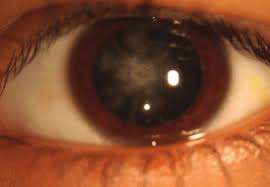Cataract Surgery
OVERVIEW
- Early Symptoms: None
- Later Symptoms:Blurry vision, colors that seem faded, sensitivity to light, trouble seeing at night, double vision
- Diagnosis:Dilated eye exam
Treatment: Surgery

TYPES
Nuclear Cataracts
Cataracts affecting the center of the lens
- As the cataract slowly progresses, the lens may even turn brown. Advanced yellowing or browning of the lens can lead to difficulty distinguishing between shades of color.
A nuclear cataract may at first cause more nearsightedness or even a temporary improvement in your reading vision. But with time, the lens gradually turns more densely yellow and further clouds your vision.

Cortical Cataracts
Cataracts that affect the edges of the lens
- A cortical cataract begins as whitish, wedge-shaped opacities or streaks on the outer edge of the lens cortex. As it slowly progresses, the streaks extend to the center and interfere with light passing through the center of the lens.

Posterior Subcapsular Cataracts
Cataracts that affect the back of the lens
- A posterior subcapsular cataract starts as a small, opaque area that usually forms near the back of the lens, right in the path of light. A posterior subcapsular cataract often interferes with your reading vision, reduces your vision in bright light, and causes glare or halos around lights at night. These types of cataracts tend to progress faster than other types do.

Congenital Cataracts
Cataracts you’re born with
- Some people are born with cataracts or develop them during childhood. These cataracts may be genetic, or associated with an intrauterine infection or trauma.
These cataracts may also be due to certain conditions, such as myotonic dystrophy, galactosemia, neurofibromatosis type 2 or rubella. Congenital cataracts don’t always affect vision, but if they do, they’re usually removed soon after detection

